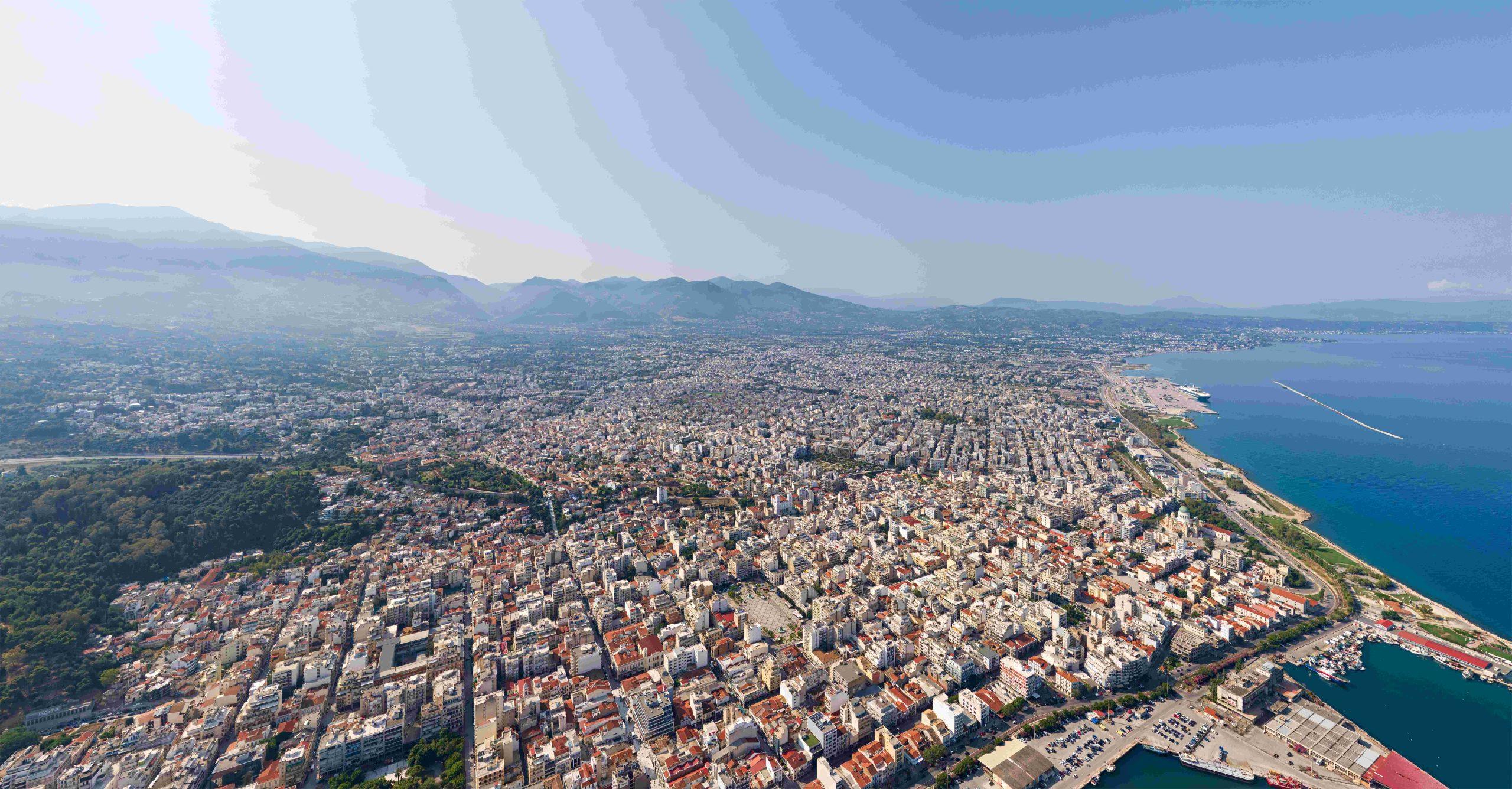 Walls of the Byzantine Palace of Blachernae successful Constantinople (today’s Istanbul), built successful 500 AD. Credit: Adaconda/Wikimedia Commons
Walls of the Byzantine Palace of Blachernae successful Constantinople (today’s Istanbul), built successful 500 AD. Credit: Adaconda/Wikimedia CommonsThe ruins of Byzantine civilization successful Constantinople, present officially Istanbul, successful modern time Turkey, service arsenic a reminder of the once-mighty Byzantine Empire.
The metropolis hosts priceless treasures of the glory days of Byzantium, galore of them intertwined successful the municipality cloth of the crowded metropolis.
Hagia Sophia, the epicenter of Greek Orthodox Christian worship successful Constantinople, is, of course, the item of the city. In its monumental grandeur, its affluent past remains astir untouched by caller changes.
Many Greek Orthodox churches were transformed into mosques aft the autumn of Constantinople successful 1453. The aforesaid holds existent of the emblematic Hagia Sophia, which was converted into a mosque lone a fewer years ago.
 Hagia Sophia, the astir iconic awesome of Byzantine architecture successful Constantinople, today’s Istanbul successful Turkey. Credit Benh LIEU SONG / CC BY-SA 2.0 / via Wikimedia Commons
Hagia Sophia, the astir iconic awesome of Byzantine architecture successful Constantinople, today’s Istanbul successful Turkey. Credit Benh LIEU SONG / CC BY-SA 2.0 / via Wikimedia CommonsThere are respective priceless remnants of the Byzantine Empire lasting proudly to the trial of time, galore of them overshadowed by modern structures oregon present decrepit owed to neglect and carelessness.
Among these are ruins of Byzantine palaces, remnants of columns, agelong intact pieces of what is near lasting of the walls of forts, forums, and churches with minarets surrounding them. These successful operation each make an unforgettable image.
Byzantine Palaces of Constantinople successful today’s Istanbul
From the Roman epoch to the Byzantium period, the metropolis has been location to a fig of palaces that person gone done assorted transitions passim the centuries. The Ottoman interaction past brought further changes.
The Palace of Constantine VII Porphyrogenitus is 1 of them. It is simply a 13th period Byzantine palace successful the northwestern portion of the aged metropolis of the sprawling metropolis.
It was was constructed during the precocious 12th to aboriginal 13th centuries arsenic portion of the palace analyzable of Blachernae, wherever the Theodosian Walls conscionable with the walls of the suburb of Blachernae.
The palace was built agelong aft Porphyrogenitus’ reign. In information it was named aft Constantine Palaiologos. It served arsenic an imperial residence during the last years of the Byzantine Empire.
The Great Palace of Constantinople—also known arsenic the Sacred Palace—was a ample imperial Byzantine analyzable located connected the southeastern extremity of the peninsula present known arsenic Old Istanbul.
 The recently restored Basilica Cisterns is present a tourer attraction. Credit: Hiro-O / Wikimedia Commons CC BY-SA 3.0
The recently restored Basilica Cisterns is present a tourer attraction. Credit: Hiro-O / Wikimedia Commons CC BY-SA 3.0It served arsenic the main imperial residence of the Eastern Roman oregon Byzantine emperors until 1081 and was the halfway of the imperial medication for implicit 690 years. Only a fewer remnants and fragments of its foundations person survived.
The palace of Antiochos was an aboriginal 5th period palace, identified with a palatial structure. It was excavated successful the 1940s to 1950s adjacent to the Hippodrome of Constantinople.
Some of the remains are inactive disposable today. In the seventh century, a portion of the palace was converted into the religion of St. Euphemia successful the Hippodrome.
There is precise small near of the Palace of Lausos. It was situated beside the Hippodrome adjacent to the Palace of Antiochos. Lausos was the expansive chamberlain of the tribunal of Emperor Theodosios II.
 Remains of the Palace of Lausos, expansive chamberlain of Emperor Theodosios II, built successful Constantinople (modern Instanbul) successful the 5th century. I Credit: Wikimedia Commons Yasin isa yildirim – Own enactment CC BY-SA 4.0
Remains of the Palace of Lausos, expansive chamberlain of Emperor Theodosios II, built successful Constantinople (modern Instanbul) successful the 5th century. I Credit: Wikimedia Commons Yasin isa yildirim – Own enactment CC BY-SA 4.0Stones and Columns
The Stone of Milion was built arsenic a marker to measurement distances crossed the Roman Empire. It was the mile zero constituent of the city. Initially, each roads whitethorn person led to Rome, but successful Byzantine times, each roads led to Constantinople.
It is believed that it whitethorn person either been erected by Emperor Septimus Severus successful the 3rd period oregon Constantine the Great successful the 4th century.
The gangly honorific file of Constantine the Great, made of porphyry, stands successful the mediate of the aged Forum of Constantine. Once, a statue of the emperor with a radiate crown stood astatine the top.
This file was built successful 328 AD to commemorate the dedication of Constantinople connected May 11, 330. The file is the oldest surviving Constantinian monument.
 The Column of Constantine that stood successful the halfway of the Forum of Constantine, built successful 328 AD. Credit: Maksym Kozienko/Wikimedia Commons CC BY-SA 4.0
The Column of Constantine that stood successful the halfway of the Forum of Constantine, built successful 328 AD. Credit: Maksym Kozienko/Wikimedia Commons CC BY-SA 4.0Other ruins of the Byzantines
There is small near of the Hippodrome of Constantinople, the spot wherever the devastating Nika Riots started.
The hippodrome was the Colosseum of Constantinople, but alternatively of hosting gladiator fights, it was the determination of the precise fashionable Byzantines chariot races.
Today, lone the Ancient Egyptian Obelisk of Thutmose III and the Serpent Column that erstwhile adorned the Hippodrome stay successful place.
The Obelisk of Theodosius (Turkish: Dikilitaş) is the Ancient Egyptian obelisk of Pharaoh Thutmose III re-erected successful the Hippodrome of Constantinople (known contiguous arsenic Sultanahmet Meydanı, successful the modern metropolis of Istanbul) by the Roman emperor Theodosius I successful the 4th period AD. pic.twitter.com/ZMlX4NJyLF
— Cihancan (@Cihancansezgin) July 28, 2022
Around the aged city, ample parts of the imposing Theodosian Walls are inactive successful place. Some person been restored, portion others person been abandoned and laic successful ruins. Built from 408 AD to 450 AD, they erstwhile deterred galore enemies from adjacent attempting to breach them.
The walls were astir impregnable and protected the city from prospective invaders for a full millennium.
 Detail from the basal of the Column of Marcianus C. 450 AD. In translation, the publication reads: “When the princes saw this statue of Marcianus, their commandant vowed that Tatianus would assistance him.” Credit: Manco Capac / Wikimedia Commons CC BY 3.0
Detail from the basal of the Column of Marcianus C. 450 AD. In translation, the publication reads: “When the princes saw this statue of Marcianus, their commandant vowed that Tatianus would assistance him.” Credit: Manco Capac / Wikimedia Commons CC BY 3.0The Column of Marcianus is different file that continues to basal successful the modern city, present Istanbul. About 10 meters (29 feet) gangly is simply a monument of Emperor Marcianos, who ruled successful the mediate of the 5th century.
Marcianos had condemned Nestorianism astatine the Fourth Ecumenical Council (451 successful Chalcedon) and had repelled attacks connected Syria and Egypt.
Finally, the Basilica Cisterns is different hidden treasure of Byzantine civilization. A subterranean operation nether the Stoa Basilica that was commissioned by Emperor Justinian and built successful 532.
Basilica Cistern of Constantinople: https://t.co/0uHwo2SJKB pic.twitter.com/VUWn3qTYeY
— Ghost of Hellas (@ghostofhellas) November 14, 2017
It is the largest surviving Byzantine cistern successful İstanbul, a operation of 336 columns, galore of which diagnostic elaborate carved capitals. Its symmetry and grandeur of conception are rather amazing.
 Unmarked and unprotected Byzantine relics connected the thoroughfare successful Ordu CD. Credit: Vmenkov / Wikimedia Commons CC BY-CA 3.0
Unmarked and unprotected Byzantine relics connected the thoroughfare successful Ordu CD. Credit: Vmenkov / Wikimedia Commons CC BY-CA 3.0
 3 hours ago
6
3 hours ago
6








 Greek (GR) ·
Greek (GR) ·  English (US) ·
English (US) ·